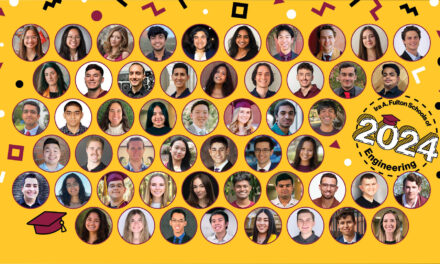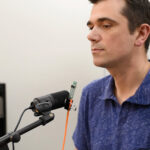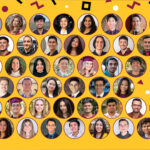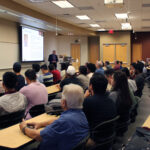
University Innovation Fellows trained to make impact at ASU
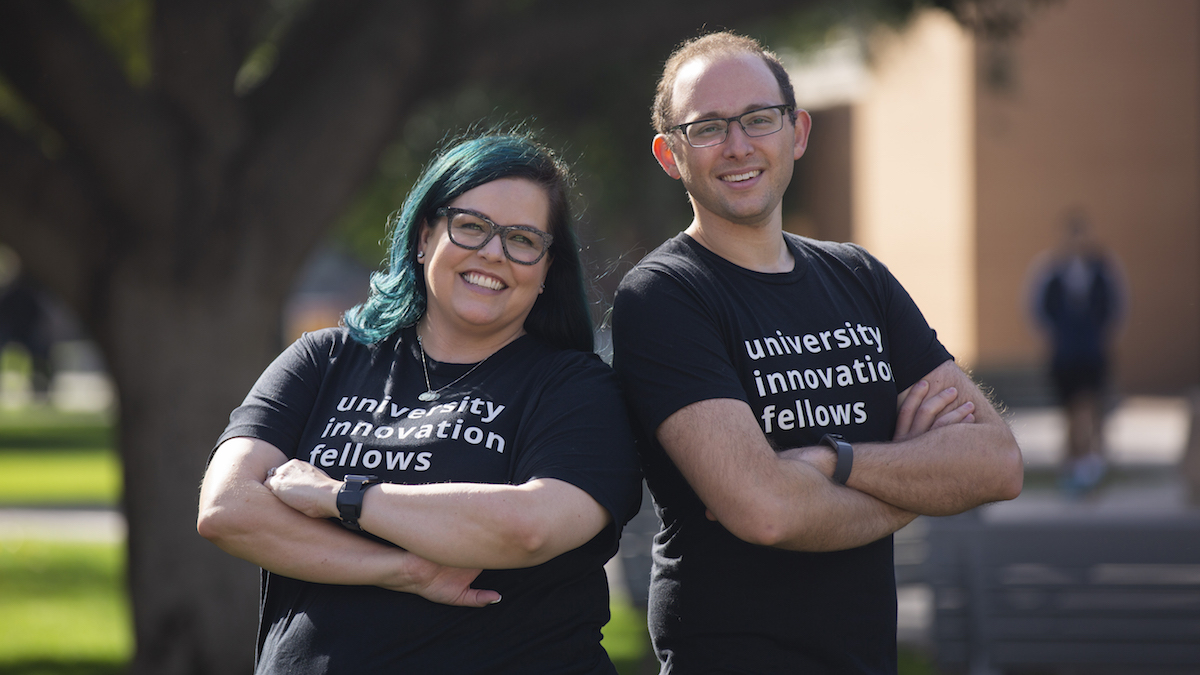
Arizona State University is among 96 higher education institutions in 16 countries with students claiming the title of University Innovation Fellow for fall 2018.
Jessica Barnett in the Ira A. Fulton Schools of Engineering and Steven Weiner in the School for the Future of Innovation in Society have completed an intensive six-week training program through Stanford University’s Hasso Plattner Institute of Design that has equipped them to help other students develop entrepreneurial mindsets, build confidence in their creativity and address global challenges.
The University Innovation Fellows program was created as part of the National Center for Engineering Pathways to Innovation, which was funded by a five-year National Science Foundation grant to weave entrepreneurship and innovation into engineering education.
Since its inception, the program has trained 1,838 students majoring in a variety of disciplines at 258 schools around the globe to become agents of change.
University Innovation Fellows help their peers gain the knowledge, skills and attitudes required to compete in the economy of the future and make a positive impact on the world.
“Jessica and Steven are students in our latest cohort of University Innovation Fellows who will apply what they’ve learned at ASU,” says Micah Lande, an assistant professor of manufacturing engineering in the Fulton Schools. Lande also serves as one of the ASU faculty mentors for this program, along with graphic information technology lecturer Christina Carrasquilla.
“Their ideas to help support and further innovation are very tangible and practical, with the potential for real and immediate impact,” says Lande.
After conducting an in-depth analysis of the university’s ecosystem, Barnett and Weiner found a plethora of programs pertaining to innovation, entrepreneurship, design thinking and creativity. These values are ingrained into the culture at ASU, which U.S. News & World Report has deemed the most innovative school in the nation for the fourth consecutive year.
Despite the range of offerings, students may not always be aware of what’s out there, so engagement in some programs remains low, says Barnett. Further, many of those resources and opportunities are geared toward students in technical majors and may seem unwelcoming to students in humanities, social sciences and similar fields.
“After transferring from community college and returning to school after raising a family, I wasn’t your typical right out of high school student,” says Barnett, a graphic information technology senior in The Polytechnic School, one of the six Fulton Schools. “My first year, I felt out of place and not necessarily welcome.”
Rather than add a new program, Barnett and Weiner will focus their efforts on developing a more inclusive, sustainable and student-driven culture of entrepreneurship and innovation through existing offerings at ASU.
Their strategic priorities include increasing student awareness of entrepreneurship initiatives across the university, developing opportunities in non-technical departments, creating venues for interdisciplinary collaboration and ensuring current makerspaces are inclusive and human-centered.
Since completing training in October 2018, Barnett has been focusing on researching, designing and deploying a kit or cart full of materials to help students prototype their ideas through a design-thinking approach. She is developing a set of guidelines students or faculty can use to tailor the cart for the specific group or department using it.
The main goal of the carts will be to empower technical and non-technical students to learn the craft of innovation and entrepreneurship. The carts will have resources to transform a classroom or makerspace into a brainstorming paradise where students can come together, create ideas and start building with the appropriate resources and tools. Essentially, this serves as the first step toward inspiring students to create products or technology for real-world impact.
The first implementation of the cart will be in the graphic information technology program. This will enable Barnett to test her idea and get feedback from students and professors.
“I envision the cart being applicable to any major. You can just roll into a room and automatically have prototyping materials and tools available for any course,” says Barnett. “Post-it Notes, Sharpies and hot-glue guns are all pretty universal, but I want to challenge myself to see how much further I can take it to specialize the cart for specific majors.”
Weiner, a human and social dimensions of science and technology doctoral student, has been working on creating events and opportunities geared toward bringing different disciplinary groups into conversation with each other at ASU.
His main priority is planning the University Symposium on Innovation through Leadership, Openness and Education, or UnSILOEd, a two-day conference to promote interdisciplinary collaboration university wide.
“Innovation means different things to different people,” says Weiner. “So, bringing students together to have a conversation about innovation that is respectful of differences in the way we think about innovation will hopefully enrich each other’s ways of conceptualizing it.”
Many of Barnett and Weiner’s strategic priorities are inspired by past fellows, who imagined a bottom-up grassroots experience for students involved in innovation at ASU. Other initiatives included a humanitarian design project showcase, the digitization of entrepreneurship and innovation opportunities, peer-led makerspaces and student consulting projects.
Aubrey Wigner, a former University Innovation Fellow from ASU who earned a doctoral degree in human and social dimensions of science from the School for the Future of Innovation in Society, has the program to thank for his current job.
He’s an assistant professor at Michigan State University, where he teaches entrepreneurship and innovation to students from every major across campus. He also sponsors his own group of students to attend the University Innovation Fellows program.
“It’s been great to see how University Innovation Fellows changed my life,” says Wigner, “and how it’s now improving the education experience for my students as well.”
Barnett and Weiner are joining a global network of like-minded students who demonstrate a strong interest in innovation and entrepreneurship coupled with a genuine desire to make an impact in scalable and sustainable ways at their universities.
“Since our university has a rather mature ecosystem of innovation, there is a lot our students can share with students at other universities about what innovation might look like in a formal or informal setting,” says Lande. “Jessica and Steven are one example among many of how fellows can take an idea of innovation and make it actionable to benefit our students and community.”






